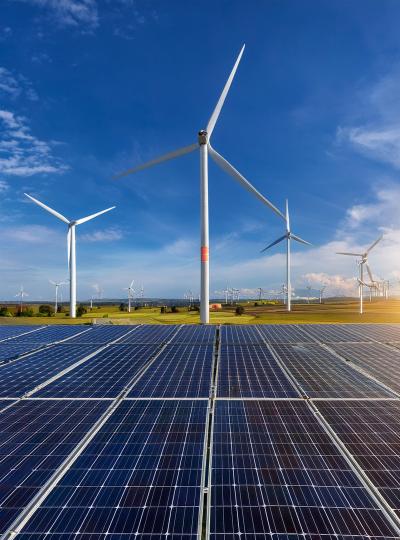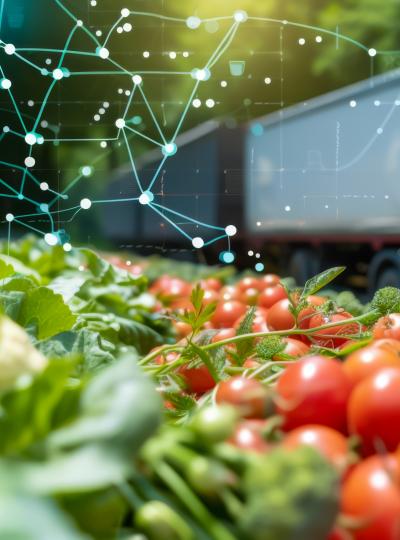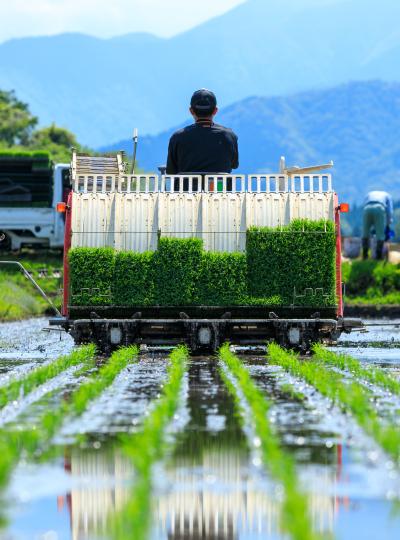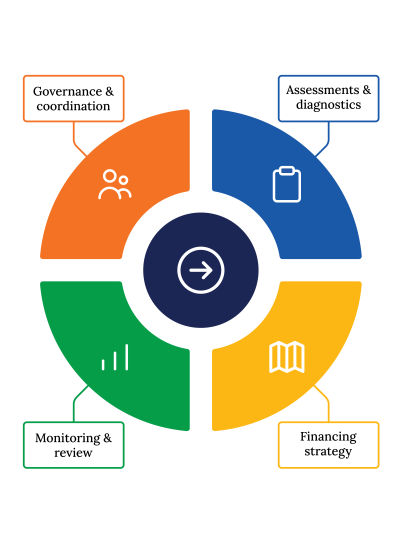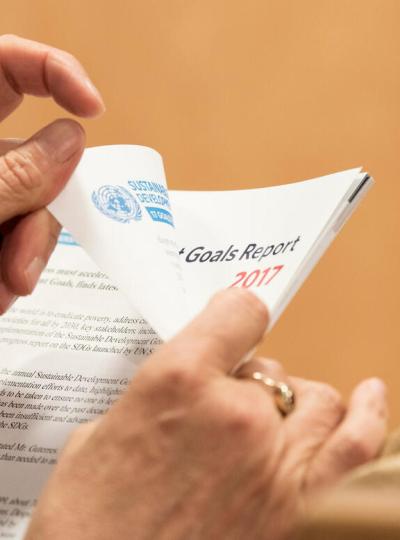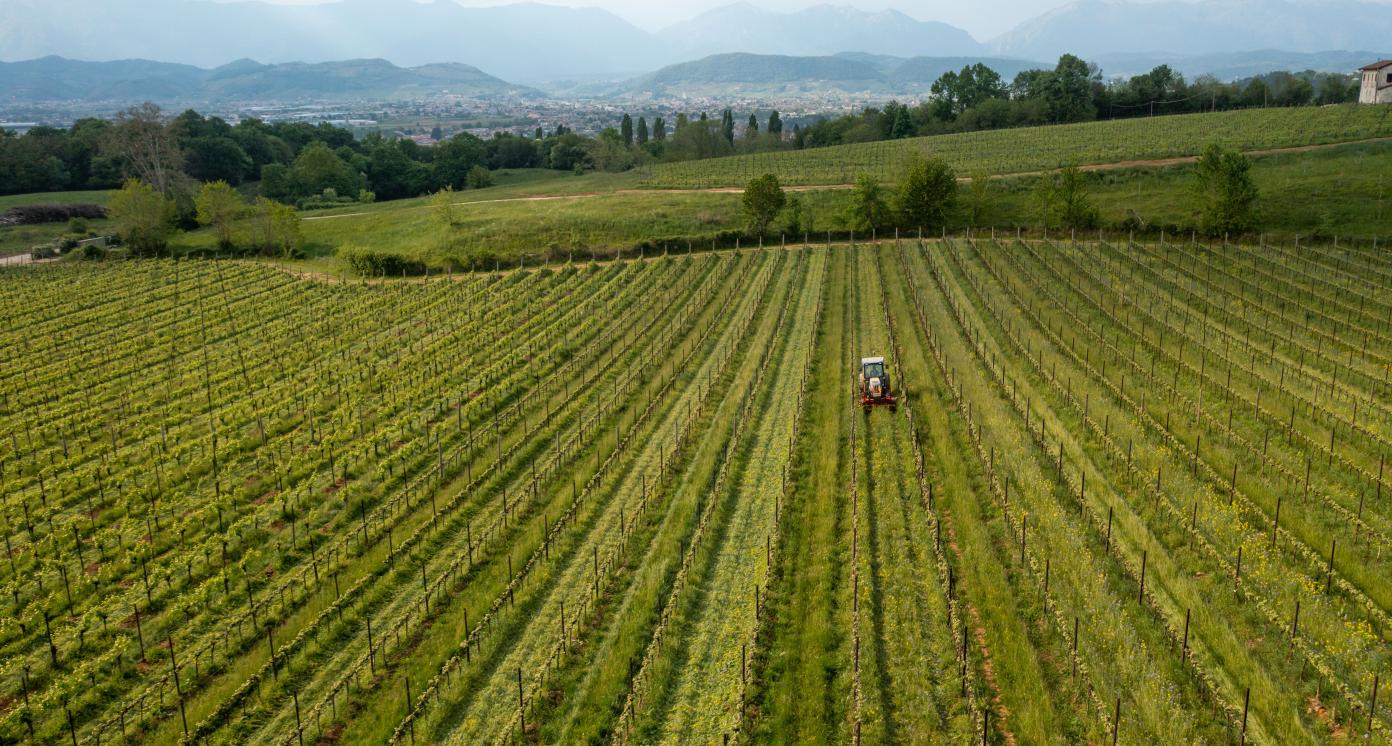Sustainable organic farming and smart agriculture
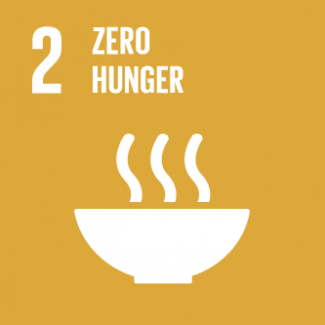
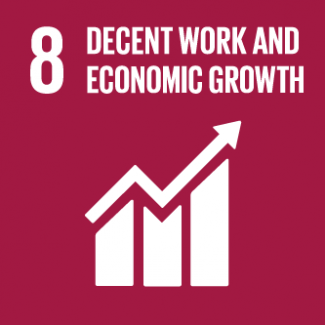
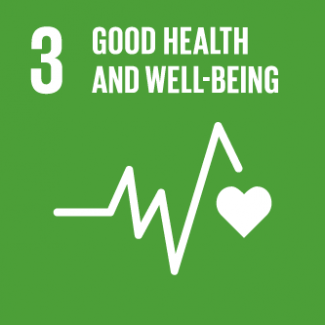
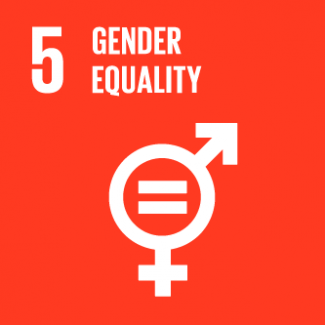
Business Model Description
Establish and scale organic farms with income generated from wholesale and direct retail of certified organic products, premium exports, value‑added processing, fee‑based cold‑chain services, certification consulting, carbon credits, agro‑tourism and by‑product sales.
Expected Impact
Enhancing rural livelihoods through sustainable organic farming, increasing market access, and promoting climate resilience in the Republic of North Macedonia's agriculture.
How is this information gathered?
Investment opportunities with potential to contribute to sustainable development are based on country-level SDG Investor Maps.
Disclaimer
UNDP, the Private Finance for the SDGs, and their affiliates (collectively “UNDP”) do not seek or solicit investment for programmes, projects, or opportunities described on this site (collectively “Programmes”) or any other Programmes, and nothing on this page should constitute a solicitation for investment. The actors listed on this site are not partners of UNDP, and their inclusion should not be construed as an endorsement or recommendation by UNDP for any relationship or investment.
The descriptions on this page are provided for informational purposes only. Only companies and enterprises that appear under the case study tab have been validated and vetted through UNDP programmes such as the Growth Stage Impact Ventures (GSIV), Business Call to Action (BCtA), or through other UN agencies. Even then, under no circumstances should their appearance on this website be construed as an endorsement for any relationship or investment. UNDP assumes no liability for investment losses directly or indirectly resulting from recommendations made, implied, or inferred by its research. Likewise, UNDP assumes no claim to investment gains directly or indirectly resulting from trading profits, investment management, or advisory fees obtained by following investment recommendations made, implied, or inferred by its research.
Investment involves risk, and all investments should be made with the supervision of a professional investment manager or advisor. The materials on the website are not an offer to sell or a solicitation of an offer to buy any investment, security, or commodity, nor shall any security be offered or sold to any person, in any jurisdiction in which such offer would be unlawful under the securities laws of such jurisdiction.
Country & Regions
- Republic of North Macedonia: Skopje
- Republic of North Macedonia: Polog
- Republic of North Macedonia: Southeastern
- Republic of North Macedonia: Vardar
- Republic of North Macedonia: Southwestern
Sector Classification
Food and Beverage
Development need
Modernizing agriculture is critical to address climate change, resource inefficiencies, and global market competition. Shifting from traditional methods to sustainable practices—such as organic farming and smart technologies—boosts productivity, strengthens rural livelihoods, and enhances export potential while fostering long-term resilience. (1)
Policy priority
Guided by the NDS 2024-2044, S3, and EPS, national policy emphasizes transitioning to organic and precision agriculture, advancing sustainability, and fostering alignment with EU climate and environmental goals. These frameworks promote technological innovation, climate resilience, and competitiveness across the agriculture sector. (1-5)
Gender inequalities and marginalization issues
Women form a substantial yet under recognized segment of the agricultural workforce. Expanding their access to resources, training, and decision-making roles drives inclusive growth. Targeted policies that support female entrepreneurship, skill development, and land ownership can boost productivity and spur broader rural development. (32)
Investment opportunities introduction
High-potential areas include organic farming, precision agriculture, enhanced irrigation, and advanced logistics solutions. Investments in digital tools (e.g., drone-based monitoring) and sustainable supply chains improve efficiency and profitability. These avenues meet rising global demand, foster innovation, and bolster rural economies. (2)
Key bottlenecks introduction
Climate variability, limited access to modern equipment, fragmented value chains, and insufficient financing constrain agricultural growth. Adoption of new technologies is hampered by high costs and a lack of skilled labor. Addressing these barriers requires supportive policies, capacity building, and infrastructure upgrades to ensure competitiveness. (12)
Food and Agriculture
Development need
Transitioning to organic and precision agriculture enhances resilience against climate change by improving soil health, water retention, and biodiversity. These approaches boost rural livelihoods, increase export revenues, and promote sustainable resource use, supporting the long-term viability of the agriculture sector. (11)
Policy priority
The Smart Specialization Strategy and National Development Strategy 2024-2044 prioritizes expanding organic farming and high-value food production to bolster exports and competitiveness. They align with EU sustainability objectives, encouraging climate-resilient practices, soil health, and reduced synthetic inputs through smart farming and technological innovation. (1, 2)
Gender inequalities and marginalization issues
Women remain a largely underutilized asset in agriculture, often facing barriers to land ownership, financing, and training. Strengthening their access to resources and decision-making roles drives productivity, fosters inclusive growth, and ensures the sector fully benefits from women’s contribution to innovation and resilience. (3)
Investment opportunities introduction
Growing EU demand for organic produce offers lucrative export prospects. Targeted investments in smart technologies, certification support, and infrastructure upgrade can unlock high-value markets. Training farmers, modernizing logistics, and building efficient value chains further enhance profitability and attract investors. (13, 14)
Key bottlenecks introduction
Costs of organic conversion, certification complexities, and limited expertise curb sector expansion. Fragile supply chains, inadequate infrastructure, and restricted financing options also constrain growth. Addressing these issues demands coordinated policies, technical assistance, and improved market access for sustainable scaling.(15, 16)
Agricultural Products
Pipeline Opportunity
Sustainable organic farming and smart agriculture
Establish and scale organic farms with income generated from wholesale and direct retail of certified organic products, premium exports, value‑added processing, fee‑based cold‑chain services, certification consulting, carbon credits, agro‑tourism and by‑product sales.
Business Case
Market Size and Environment
USD 50 million - USD 100 million
In 2023, North Macedonia had 888 organic producers farming 4,215 hectares, with a market size of around $69.5 million. The average farm size was 4.75 hectares, indicating mostly small to mid-scale operations. With rising global demand for organic food, the sector shows strong potential for growth through investment and export support. (31)
The EU organic farmland has increased by 50% over the last decade, with 9.1% of total agricultural land now under organic cultivation. Policies such as the EU Farm to Fork Strategy aim to increase organic farming to 25% of total agricultural land by 2030, further driving demand for organic inputs and certified exports. (8)
Indicative Return
10% - 15%
Estimated at 10–15%, reflecting returns observed in comparable organic agriculture investments in Serbia and Croatia. Contributing factors include premium pricing in export markets, government support, and rising consumer demand for sustainably produced food. (38)
Investment Timeframe
Medium Term (5–10 years)
A 5–7 year horizon is typical for organic transition and market integration. Initial 2–3 years focus on soil improvement, certification, and supply chain setup, while years 4–7 see yield stabilization, branding, and export growth.(38, 39)
IPARD and national subsidies often operate in multi-year cycles. Aligning investments with these timelines helps secure grants, reduce financing costs, and maximize returns over the program’s duration. (4)
Ticket Size
> USD 10 million
Market Risks & Scale Obstacles
Market - Highly Regulated
Capital - Requires Subsidy
Impact Case
Sustainable Development Need
Rural livelihoods are unstable due to low income diversification and limited market access. Many smallholders rely on outdated techniques, lacking capital for improvements. Building cooperative networks and adding value through organic certification boosts incomes and local development. (15, 16)
Soil degradation and climate change threats reduce productivity in many regions. Water scarcity and erratic rainfall patterns further compound risks. Implementing organic and precision methods helps restore soil fertility, conserve water, and enhance resilience. (17)
Gender & Marginalisation
Women’s participation in agriculture is undervalued, limiting productivity and equity. Only about 20% of landowners are female, reducing their economic opportunities. Targeted training, inclusive value chains, and access to resources empower women, strengthen families, and advance social cohesion. (18)
Rural youth face high unemployment, discouraging them from agriculture. Low wages, outdated methods, and limited market links exacerbate marginalization. Integrating modern technology and skill-building can retain youth and drive sector innovation. (19)
Expected Development Outcome
Increased adoption of organic and precision farming improves soil health, reduces chemical input dependency, and enhances climate resilience. Expanding financing and training for rural women and youth fosters inclusive growth.
Increased farm incomes and reduced rural poverty through value-added organic production and cooperative marketing. As more smallholders and women gain stable earnings, unintended outcomes may include higher land costs due to demand for productive plots.
Improved environmental resilience from adoption of climate-smart practices and lower pesticide use, restoring soil fertility and water resources. A potential side effect is the need for additional training in integrated pest management.
Gender & Marginalisation
Women’s participation in agriculture increases through improved access to land, financing, and training. Youth benefit from agri-tech jobs, reducing rural-urban migration.
Primary SDGs addressed

2.4.1 Proportion of agricultural area under productive and sustainable agriculture
The total area with crop organic production is 4 215 hectares of which 1 475 hectares are areas of organic production in conversion period (2023). (20)
By 2030, expand organic farmland to 10,000 ha and ensure 25% of agriculture follows sustainable practices. (21)

8.1.1 Annual growth rate of real GDP per capita
Annual growth rate of real GDP per capita is roughly 2.7%, reflecting a gradual recovery from pandemic-related setbacks. This metric gauges broad economic progress and living standards.
Secondary SDGs addressed


Directly impacted stakeholders
People
Gender inequality and/or marginalization
Planet
Corporates
Public sector
Indirectly impacted stakeholders
People
Gender inequality and/or marginalization
Planet
Corporates
Public sector
Outcome Risks
Excessive irrigation in Vardar and Pelagonija depletes water reserves, threatening long-term availability for agriculture and local communities.
Major commercial operators could limit market access and bargaining power for smallholders, restricting their growth and profitability.
Women may continue to struggle to secure land titles and funding, constraining their capacity to invest in modern farming techniques and expand operations.
High pesticide usage endangers both farmworkers and consumers, contributing to soil and water contamination and affecting public health.
Impact Risks
If organic practices fail to boost yields, smallholders remain indebted, eroding trust in sustainable methods and limiting income gains.
Restricted female access to land or finance perpetuates marginalization, undercutting inclusive aims and constraining sector-wide productivity.
Delays or failures in certification prevent farmers from securing premium prices, reducing profitability and discouraging wider adoption of organic methods.
Pest or disease outbreaks in organic systems can lower harvests, prompting farmers to revert to chemical inputs and undermining ecological benefits.
Persistent barriers, limited land ownership and financing could exclude women and minority groups from organic initiatives, undercutting inclusive growth goals.
Impact Classification
What
Increased agricultural productivity and rural employment through modernized, sustainable farming practices that boost yields, generate income, and fortify local economies.
Who
Farmers, agribusinesses, and rural workers—particularly in underserved regions—benefit from enhanced market access, improved livelihoods, and strengthened value chains.
Risk
High costs for modern equipment, certifications, and infrastructure limit sector growth. Access to affordable financing and tailored investment instruments is crucial for scaling.
Contribution
Supports sustainable food security by providing reliable, eco-friendly supply chains. Encourages inclusive growth via skill-building, job creation, and reduced environmental impact.
How Much
Organic farming aims to reach 2,000 farmers across 10,000 hectares, boosting yields by ~20% and incomes by 25%. It projects a 5% annual rise in rural employment within five years.
Impact Thesis
Enhancing rural livelihoods through sustainable organic farming, increasing market access, and promoting climate resilience in the Republic of North Macedonia's agriculture.
Enabling Environment
Policy Environment
National Dev Strategy 2024-2044. Section IV (Agr. & Rural Dev.) promotes eco-friendly production, improved value chains, and digitalization in farming, directly supporting the Sustainable organic farming and smart agriculture focus on organic expansion and climate-resilient methods. (1)
Smart Specialization Strategy 2024-2027. Chapter 2.2 (Agri-Tech) identifies agriculture as a priority sector, fostering innovation through R&D, precision farming, and university-industry collaboration—key enablers for high-value organic production. (2)
Green Agenda for the Western Balkans. calls for alignment with EU climate targets, advocating reduced pesticide use, resource efficiency, and renewable energies in farming, mirroring the Sustainable organic farming and smart agriculture sustainable approach. (22)
Financial Environment
Financial incentives: IPARD grants cover up to 70% of eligible costs for sustainable agriculture (e.g., irrigation and organic upgrades). The Innovation Fund offers subsidized loans for modern equipment and tech adoption. (26)
Fiscal incentives: tax breaks for organic certification, subsidies for agricultural production, duty-free imports of agricultural machinery, and reduced corporate income tax for projects that create rural jobs strengthen the competitiveness of farms. (27, 28, 29)
EU Horizon Europe grants fund climate-smart pilot projects. Local governments provide land-lease programs at reduced rates, lowering entry barriers and encouraging smallholders to scale up. (30)
Regulatory Environment
Law on Agriculture and Rural Development – Regulates subsidies, organic certification, and market access. (23)
Law on Organic Agricultural Production - Defines standards for organic farming and compliance with EU regulations. (24)
Law on the Quality of Agricultural Products.- Mandates product safety and quality benchmarks, reinforcing consumer trust. By adhering to quality labels and traceability requirements, the IOA can differentiate its organic goods in competitive markets. (25)
Marketplace Participants
Private Sector
Local agribusinesses (e.g., organic cooperatives and processing firms), input suppliers (seeds, fertilizers), and tech providers (smart irrigation, data analytics) that drive commercial innovation and market expansion.
Government
Ministry of Agriculture and regional agricultural offices that develop policy frameworks, administer subsidies, and regulate organic standards, shaping the sector’s strategic direction and compliance.
Multilaterals
World Bank, EBRD, and FAO offering funding, technical assistance, and policy guidance to modernize agriculture, enhance sustainability, and strengthen value chains at scale.
Non-Profit
Agricultural NGOs, farmer associations, and local community groups supporting capacity-building, advocating inclusive land rights, and fostering collective action among smallholder producers.
Public-Private Partnership
Skopje and Ohrid Airports Concession: in 2008 the Government of North Macedonia granted a 20‑year PPP concession to Tepe Akfen Ventures (TAV) for the financing, design, upgrade and operation of both Skopje International Airport and Ohrid St. Paul the Apostle Airport
Target Locations
Republic of North Macedonia: Skopje
Republic of North Macedonia: Polog
Republic of North Macedonia: Southeastern
Republic of North Macedonia: Vardar
Republic of North Macedonia: Southwestern
References
- (1) Government of North Macedonia. (2024). National Development Strategy of the Republic of North Macedonia 2024 – 2044. Skopje.
- (2) Government of North Macedonia. (2024). Smart Specialization Strategy. Skopje.
- (3) Finance Think. (2024). State Aid in the Republic of North Macedonia: A Critical Review of the Regulatory Framework.
- (4) Ministry of Agriculture, Forestry, and Water Economy. (2023). National Program for Agricultural and Rural Development 2023-2027. Available at: www.mzsv.gov.mk
- (5) Ministry of Agriculture, Forestry, and Water Economy. (2024). Program for Financial Support for Rural Development 2024.
- (12) FAO (2017) The future of food and agriculture, Trends and Challenges
- (13) IFOAM (2025), The World of Organic Agriculture - Statistics and Emerging Trends 2025
- (14) EC (2021), EU agricultural outlook for markets, income and environment, 2021-2031
- (15) Babajani, A., Muehlberger, S., Feuerbacher, A., & Wieck, C. (2023). Drivers and challenges of large-scale conversion policies to organic and agro-chemical free agriculture in South Asia. International Journal of Agricultural Sustainability, 21. https://doi.org/10.1080/14735903.2023.2262372
- (32) FAO (2023). The status of women in agrifood systems. Rome, Italy.
- (6) Ministry of Agriculture, Forestry, and Water Economy. (2024). Program for Capital Subsidies for the Development of Planning Regions in Agriculture and Rural Development for 2024.
- (7) Ministry of Agriculture, Forestry, and Water Economy. (2024). Official Website. Available at: www.mzsv.gov.mk
- (8) European Commission. Organic Farming in the EU: A Decade of Organic Growth. Agricultural Market Brief No. 20, 2023, https://agriculture.ec.europa.eu/document/download/df01a3c7-c0fb-48f1-8eca-ce452ea4b8c2_en?filename=agri-market-brief-20-organic-farming-eu_en.pdf.
- (9) Structured Interview with Blagoja Mukanov, Expert in Digital Agriculture and Agribusiness Development, Ag-innovation implementation, piloting, validation and upscaling, Center for Digital Agriculture and Food Production, Premises of AgFutura Technologies, Skopje, North Macedonia, February 20th, 2025.
- (10) Serbia Organica. Organic Production in Serbia. Serbia Organica, 2025, https://serbiaorganica.info/en/organic-production-in-serbia/.
- (11) Dimitrieska-Stojkovikj, E., Crceva Nikolovska, R., Uzunov, R., Mojsova, S., Angeleska, A., & Angelovski, L. (2024). A systematic review of the impact of climate change on agriculture and future adaptation strategies for North Macedonia. Proceedings of the XV International Scientific Agricultural Symposium “Agrosym 2024”, 939–941
- (16) Kaur, A. (2015). Organic farming: status and constraints. Indian Journal of Economics and Development, 11(1), 333–338. https://doi.org/10.5958/2322-0430.2015.00037.2
- (17) Acharya, R., Samanta, K., Haque, K. N., Box, S., Sengupta, S., Bhattacharya, P., & Kanthal, S. (2024). Climate change impact on soil health and crop production. International Journal of Research in Agronomy. https://doi.org/10.33545/2618060x.2024.v7.i4c.540
- (18) FAO (2011). The State of Food and Agriculture 2010-2011: Women in agriculture - Closing the gender gap for development
- (19) FAO (2014) Youth and agriculture: Key Challenges and Concrete Solutions
- (20) SSO (2023), News Release Organic Agriculture. Link: https://www.stat.gov.mk/pdf/2024/5.1.24.11_mk.pdf
- (21)https://zelenaberza.com.mk/ek-do-2030-godina-25-otsto-od-zemjodelstvoto-da-bide-organsko/
- (22) EC (2020), Guidelines for the Implementation of the Green Agenda for the Western Balkans
- (23) Law on Agriculture and Rural Development, Official Gazette of the Republic of Macedonia No. 110/21
- (24) Law on Organic Agricultural Production, Official Gazette of the Republic of Macedonia No. 146/09, 53/11, 149/15, 39/16, 132/16
- (25) Law on the Quality of Agricultural Products, Official Gazette of the Republic of Macedonia No. 140/10, 53/11, 55/12, 106/13, 116/15, 149/15, 193/15, 39/16 and Official Gazette of the Republic of North Macedonia No. 150/21
- (26) Ministry of Agriculture, Forestry and Water Management, Public Call for Measure 7 of the IPARD Program in a total amount of 14 million euros
- (27) Economic Reform Program 2025-2027, Ministry of Finance, Republic of North Macedonia
- (28) Organic Production Program 2023, Ministry of Agriculture, Forestry and Water Management, Republic of North Macedonia
- (29) National Program for Agriculture and Rural Development 2023-2027, Ministry of Agriculture, Forestry and Water Management, Republic of North Macedonia
- (30) European Commission, Horizon Europe - Cluster 6: “Food, bioeconomy, natural resources, agriculture and environment”
- (31) Organic production in 2023, The announcement is in the field of: Plant production, State Statistical Office
- (33) Program for the Development of the Skopje Planning Region 2021-2026, Center for the Development of the Skopje Planning Region
- (34) Program for the Development of the Polog Planning Region 2021-2026, Center for the Development of the Polog Planning Region
- (35) Program for the Development of the Southeast Planning Region 2021-2026, Center for the Development of the Southeast Planning Region
- (36) Program for the Development of the Vardar Planning Region 2021-2026, Center for the Development of the Vardar Planning Region
- (37) Program for the Development of the Southwest Planning Region 2021-2026, Center for the Development of the Southwest Planning Region
- (38) UNDP SDG Investor Platform – Investment Opportunity Area: Fresh Fruit & Vegetable Primary Production, Serbia.
- (39)Dossier (2021) Organic Farming, Basic principles and good practices
- (40) IMARC Group (2023) Organic Food Market 2024, Size, Growth And Trends
- (41) World Bank, Project Information Document – Agriculture Modernization Project (P168014),
- (42) UNCTAD. Financing Organic Agriculture in Africa: Mapping the Issues (2016).
- (43) FAO. Organic Agriculture and Access to Food at a Local Level (2012).





